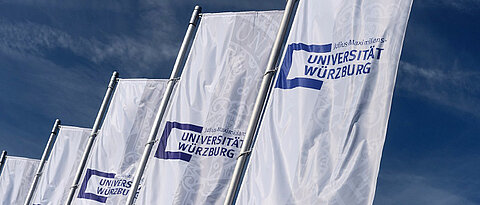Why some beetles like alcohol
04/09/2018
Alcohol used as a "weed killer" optimizes the harvest of ambrosia beetles.
more
Alcohol used as a "weed killer" optimizes the harvest of ambrosia beetles.
more
Scientists from the University of Würzburg have investigated the impact of a new pesticide on the honeybee. In high doses, it has a negative impact on the insects' taste and cognition ability.
more
An increasing proportion of the world's protected forests are subject to extensive logging activities. The practice is called "salvage logging" and allegedly aims to protect e.g. areas of windthrow against bark beetle infestation. However, a Würzburg study has found that this instrument is used far too often.
more
Biologist Svenja Meierjohann has been awarded this year's Zonta Prize for her outstanding work in the field of cancer research.
more
The hormone auxin is a key regulator of plant growth and development. But how it sets these processes in motion has been unclear. Scientists from the University of Würzburg have now uncovered central details.
more
Crop variety in agriculture has a positive impact on the natural enemies of aphids. Farmers can use this insight to keep aphids at bay and cut down on pesticides.
more
Bioinformatics specialists from the University of Würzburg have studied a specific class of hormones which is relevant for plants, bacteria and indirectly for humans, too. Their results challenge previous scientific assumptions.
more
Ants dress the wounds their mates have suffered in battle. Such behaviour is believed to be unique among animals.
more
They reproduce through gynogenesis. Their offspring are clones of the mother. According to established theories, the Amazon molly should have become extinct a long time ago. A new study shows how the fish avoids this fate.
more
Astonishing evolution: Because digger wasps switched prey, the chemical protective layer of their skin changed, too.
more
Myc proteins play an important role when cells become cancerous. Researchers from the University of Würzburg have studied just how they do this. They might thus open up ways to develop new therapies.
more
The quinoa plant might serve as a model for making other crops salt-tolerant. It grows well on saline soils because the excess salt is simply dumped into special bladders on its leaves.
more
A great success for the University of Würzburg in the first round of the Excellence Strategy: expert committee approves three draft proposals for Excellence Clusters in the fields of physics, chemistry and medicine.
more
One specific gene is overexpressed in many human tumours. This particular gene is the centre of Elmar Wolf’s research activities. The European Research Council (ERC) has awarded him a "Starting Grant" worth €1.5 million for this purpose.
more
The prestigious Shanghai Ranking has placed the University of Würzburg among the world’s top 200 universities – as one of four Bavarian and 15 German universities.
more